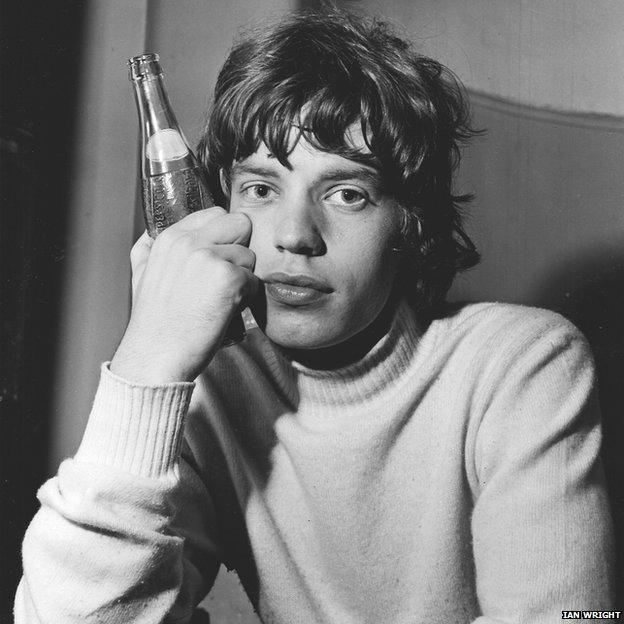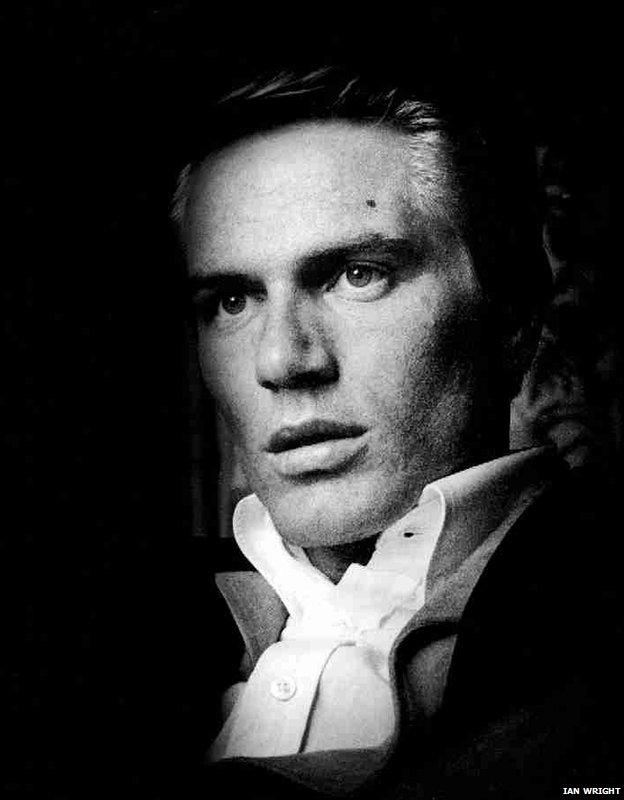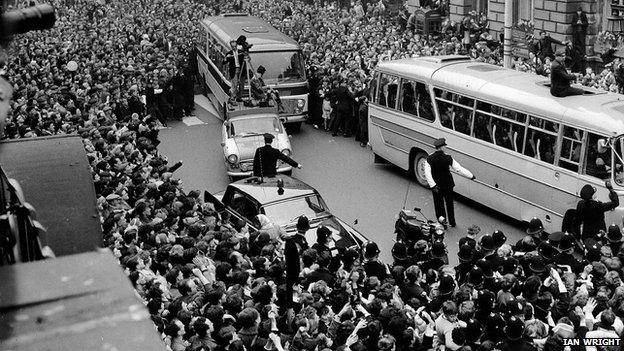On the brink of fame
- Published
- comments

In February 1963, Ian Wright was a 16-year-old junior photographer-cum-darkroom boy on The Northern Echo. The new editor, Harold Evans - now Sir Harold - had started a weekly supplement aimed at teenagers and Ian found himself at the Sunderland Empire when four lads from Liverpool stepped on to the stage. It was the haunting mouth organ intro by John Lennon to Love Me Do that sparked Ian's love of The Beatles and began a career behind the lens.
"They were performing on the Helen Shapiro Variety Show. In those early days there were no backstage passes so I just left my old rusty school bike with 'Don the Doorman' and wandered around backstage photographing everyone on the bill. I photographed The Beatles with my flash the size of a Bentley headlamp, which when it went off it temporally blinded them. As they began to move away rubbing their eyes, I shouted: "Stop, stop, I need your names - how naive."
Eighteen months later Ian took the photograph at the top of the page, of press photographers gathered on York Station waiting for The Beatles to arrive. The Fab Four had gone from bottom of the bill to superstars, and Ian was no longer the junior photographer travelling on his bike to shoots.
Ian was lucky to be working with Harold Evans, who promoted him to staff photographer and ensured that his pictures were given the space they needed within the paper, building the page around them.
Ian went on travel the world, working for the Sunday Times and the Radio Times, photographing royals, film stars, celebrities and politicians before taking up a role at Baylor University, heading the Practical Press Photography Department in the 1980s.
Some of his early work can be found in a new book.
I asked Ian what advice he'd offer to anyone wanting to work in the profession. His reply: "Always adopt the 3Ps - patience, politeness, and perseverance." From someone whose career spans 50 years that has got to be good advice.
Here are a few of Ian's pictures.
A royal double take, 1964

The Queen and the Duke of Edinburgh arrive in Darlington, 1964
"This was one of my first page one pictures as a senior photographer after passing the first ever NCTJ, external three-year course for press photographers in October 1964. Everyone believed I had reversed the negative to give this double take effect of the royal couple arriving at Bank Top station in Darlington - in fact they were laughing at one of the corgi dogs running loose on the platform.
"It was only after I pointed out Her Majesty's brooch was on the same side of her coat that I convinced everyone these were indeed two separate photographs. Harry Evans had no hesitation in putting them on page one, the headline: The Royal Double-Take."
Mick Jagger and the Pepsi bottle

"Jagger was 21 and I was 19 when I met him for the first time in the summer of 1963. The Rolling Stones were performing their first gig outside of the metropolis playing a one-night stand at The Alcove Club in Middlesbrough. He told me: 'If we don't make it I'm going to become a bilingual correspondent for the FT in London and Paris.' The only thing we had in common and still have today is our love of cricket."
Adam Faith's parting

"This is my favourite portrait. Alas, when I first presented it to the subs desk, I was taken aback when the chief sub said: 'Better print this again, Wrighty, his parting's on the wrong side.' I retreated to the darkroom and put the 5x4 negative in the enlarger - always emulsion to emulsion was the rule when printing. I doubled checked I hadn't made a mistake, so off I went to Adam's theatrical digs in town. He explained: 'My mum was left-handed so when she combed my hair the parting was always on the wrong side, the right side'."
Beatlemania

The Beatles arrive in Sunderland, 1963
"This was the first time I had been driven to any assignment. My editor wanted to witness for himself what messages my weekly images were portraying to the readers.
"I adore this picture for many reasons - the BBC Look North camera crew on a wooden stage plonked on the roof of an old Vauxhall car and the animation of the crowd, pointing and waving at The Beatles' bus. My hope is this photograph portrays the genuine feelings of all ages of what Beatlemania meant to so many."
The Beatles beside the seaside

"This is an unpublished portrait of The Beatles before their seaside performance in Scarborough in 1964. Earlier in the year they had conquered America on their first visit, when a then record of more than 70 million Americans tuned in to watch their debut performance on the Ed Sullivan Show.
"Now looking more relaxed and assured than when I had last photographed them on 22 November 1963 at the Globe Theatre, Stockton-on-Tees, the day JFK was assassinated, John told me: 'We're off back to America next week, wanna come?' Proudly tugging on his striped blazer, he said: 'Got this in Miami - what do you think, Wrighty?' They were obviously looking forward to the next week when they would depart for their first North American tour, aptly named The Eye of the Hurricane. The tour lasted 34 days, playing 32 concerts, 436,041 people attended the shows and the Beatles travelled in their private plane a total of 40,000 miles."
Dusty in the snow

"Dusty Springfield was without doubt the most vivacious, fun-loving singer who was always up for a photo opportunity. She is seen here posing in the snow with my mum's coal shovel clearing a path to the Club Fiesta in Stockton-on-Tees in 1965, showing that it was still open for business, blizzard or no blizzard.
"While I was taking these shots a beautiful collie dog appeared, collar but no ID. She followed us back into the club but no one had any idea where she came from so I took a photograph and put an SOS in the paper. Alas, no-one came forward to claim her. The staff rallied round and looked after her and she spent the rest of her days at the club."
You can see more of Ian's work on his website: www.onthebrinkoffame.com, external
These photographs of the stars of the 1960s can now be found in a book by Ian Wright, On the Brink of Fame, and some can be seen at The Cashman Photographers Gallery, situated next to The Rio Hotel in Las Vegas, where a number have been reinterpreted (below).
